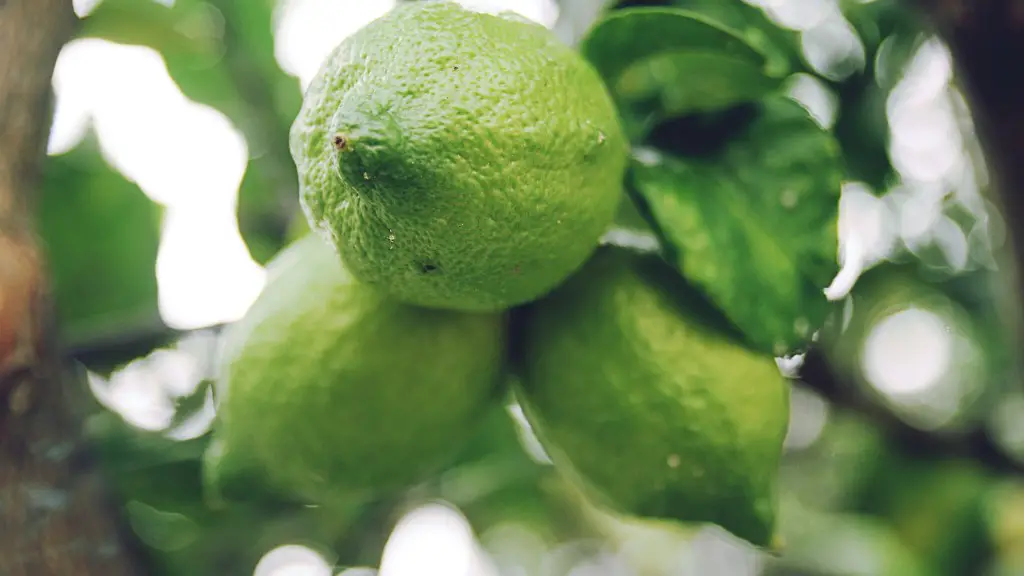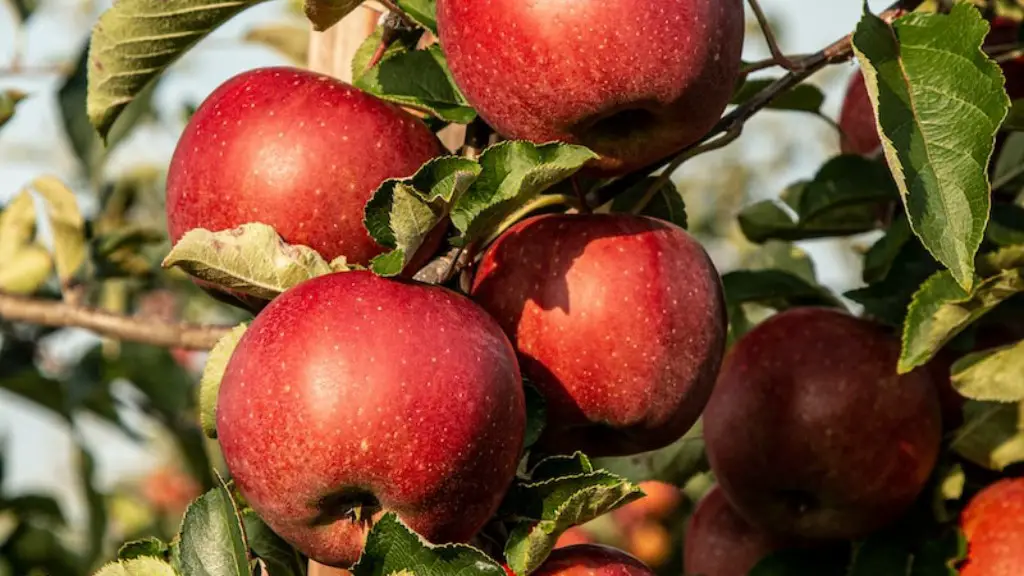Growing dwarf Meyer lemons in containers is a great option for those who don’t have a large yard or green space to plant in. The Meyer lemon is a unique variety of citrus tree that produces a sweet, tart fruit with a smooth, soft skin. Here’s how to grow a dwarf Meyer lemon tree in a container.
Start with a good size container and premium quality potting soil. Smaller trees often do better in slightly larger pots, as they tend to be in a better position to take advantage of the soil quality. Make sure to pick a container with holes in the bottom for proper drainage.
Next, make sure to pick out a Meyer lemon tree. Dwarf varieties are best suited for containers, meaning that full-grown trees will not produce as much fruit as their larger counterparts. For added support, consider investing in a small trellis to help keep the tree upright and healthy.
Once you’ve planted the tree, give it room to grow. Super bright sun during the morning is ideal, with a spot against a sunny wall or window being ideal. Move the plant away from direct sunlight during the afternoon, which can be harsh and cause leaf burn.
The soil should be loamy and well-draining. When the weather is drier, provide adequate water. If there’s too much water, the tree can suffer root rot. However, be aware that over-watering is a more likely occurrence than under-watering.
As the tree grows, you’ll need to prune it in order to maintain shape and keep it from getting too big. Pruning should be done in the early spring or late winter when the tree isn’t actively growing. Remove any particular branches that are diseased or damaged.
Finally, feed the tree every two to three weeks with a citrus fertilizer during the growing season. This will help to ensure a healthy growth and abundant fruit harvest.
Fertilizing Dwarf Meyer Lemon Trees in Containers
Fertilizer is key to having a well-maintained Meyer lemon tree in a container. It them with the nutrients they need to reach its maximum growth potential, while promoting strong root and foliage development. Choose a fertilizer tailored made for citrus trees, since this will provide the right balance of nutrients.
When in doubt, try using a general-purpose fertilizer made up of both nitrogen and phosphorous. These two nutrients are the most important for promoting a healthy balance in a citrus tree. Nitrogen helps promote growth, while phosphorous helps to encourage strong root development.
If you want to be sure you are providing your Meyer lemon tree with the best nutrients, choose a fertilizer that also contains micronutrients like iron, zinc, copper, and manganese. These minerals are essential for healthy growth and fighting off disease. Make sure to apply fertilizer in the early spring and again in early fall to promote a healthy growing season.
Granular or liquid fertilizers are the two main categories. Granular fertilizers are initially more expensive, but they don’t give off an unpleasant odor, unlike their liquid counterparts. Liquid fertilizers tend to be faster acting, however, which makes them a great option for those who need to give their trees an instant boost.
Finally, it’s important to fertilize regularly. This means applying fertilizer every two to three weeks during the growing season. Doing so will ensure your Meyer lemon tree gets the nutrition it needs to reach its full potential.
Disease and Pest Prevention for Container-Grown Dwarf Meyer Lemon Trees
Just like any growing plant, Meyer lemon trees can be vulnerable to a variety of pests and diseases. The good news? Many of these problems can be prevented through proper care and maintenance. Maintaining a well-drained, balanced soil, avoiding overwatering, and keeping an eye out for signs of damage are all critical steps.
Common pests that may affect your Meyer lemon tree include aphids, scale, and mealybugs. These pesky bugs can be dealt with using natural insecticides, such as neem oil or insecticidal soap, or even by releasing beneficial insects like ladybugs or praying mantis into the garden. Remember to inspect your tree carefully and take note of any infestations so that you can take steps to remove them immediately.
Common diseases include blight and root rot, both of which can be avoided by planting in a well-draining soil and ensuring adequate water and nutrition throughout the growing season. Be aware of signs of distress, such as yellowing, wilting, and discoloration, that may indicate root rot or blight. If found, take steps to properly address the issue.
Finally, pay close attention to your tree’s overall health. Good pruning and proper nutrition are essential in keeping your Meyer lemon tree healthy and pest and disease-free. Keep the roots of the tree cool and moist, and be aware of any signs of distress.
Harvesting Lemons from Container-Grown Dwarf Meyer Lemon Trees
Your Meyer lemon tree should produce fruit in the early spring and summer months. Once the lemons have ripened, they can be harvested. Lemons stay ripe after they’ve been harvested, so the best way to determine if a lemon is ready for picking is to do a taste test. If it’s sweet and juicy, it’s ripe and ready to be picked.
One trick that can help ensure that the tree produces plenty of fruit is to pick the lemons when they are still green. This can help to promote further fruit development. Lemons picked when they are a bit green will still taste great, but will take a few weeks to reach full ripeness.
Give the tree a gentle shake or use a fruit picker to easily remove the lemons. Careful harvesting is important in order to protect the tree’s branches. Finally, make sure to clean up any fallen leaves and fruit that might accumulate in order to maintain a healthy tree and avoid disease.
Caring for Dwarf Meyer Lemon Trees in Containers During Winter
Winter is your Meyer lemon tree’s time to rest. If you live in a cold climate, make sure the tree is protected from any extreme cold. Consider bringing it indoors or covering it with a sheet or frost-resistant garden fabric. Make sure the tree is getting plenty of light, as this will help it to stay active.
If temperatures dip below freezing, it’s important to provide extra protection. If there is any damage to the foliage, such as frostbiting or wilting, make sure to remove the damaged leaves with a pair of gardening shears. This will help to prevent the spread of disease.
It’s also important to reduce the amount of water during the winter months. The soil should be allowed to dry out completely before watering. During this time, refrain from fertilizing, as the tree isn’t actively growing. Instead, wait until spring for a fertilizer boost.
Finally, it’s a good idea to prune any branches that are dead or damaged as soon as you notice them. If the pruning is done early, it can help discourage any disease from taking over the tree during the dormant season.
Overwintering Container-Grown Dwarf Meyer Lemon Trees
If you live in a much colder climate, the winter months can be too harsh for growing Meyer lemon trees outdoors. In this case, it is best to move the tree indoors for overwintering. Thankfully, Meyer lemons are suitable for indoor growing, since they prefer cooler temperatures and brighter sunlight.
Choose a spot in your home that provides direct sunlight in the morning and indirect light in the evenings. Try to avoid direct sun in the afternoon, as this can be too intense. If possible, keep the tree in an area with good air circulation, such as near an open window.
It’s important to water the tree enough, but not too much. The soil should be allowed to dry slightly between watering to avoid root rot. As the temperature begins to rise, feel free to move the tree outdoors. Make sure it gets some bright light, and adjust the water accordingly, as outdoor conditions will be quite different from indoors.
Finally, keep an eye out for any signs of distress, such as fading leaves or lack of growth. If there are any signs of disease or pests, take steps to address them immediately for best results.




